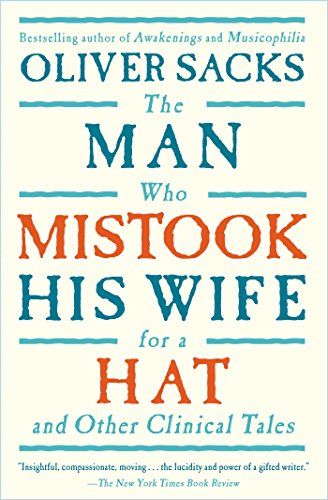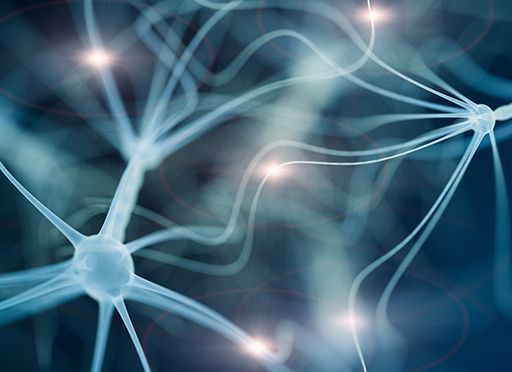Dr. Oliver Sacks offers a fascinating window into the surprising universe of brain function through in-depth case histories of patients living in the bizarre world of neurological disorders.

Wild Wild Minds
Dr. Oliver Sacks – who practiced neurology for more than 50 years – explains that neurology and neuropsychology historically focused on the study of cognitive functions mediated by the left hemisphere of the brain. Medicine once – unjustly – regarded the right hemisphere as the home of more primitive functions. Its intricate mechanisms, while perhaps less obvious than those of the left hemisphere, mediate cognitive functions, such as recognizing reality. Patients with right hemisphere syndromes find it difficult to understand their own problems, as observers find it challenging to understand these patients’ inner workings.
“Losses”
Classical neurology sees the brain as a machine and a computer. Human mental processes involve classifying categorizing, judging and feeling. If someone loses any of these abilities, he or she becomes as computer-like as the man in one of Sacks’s case studies, Dr. P., a musician and teacher.
Dr. P. did not recognize students who approached him until they spoke. He saw faces when there were no faces to see. He might address fire hydrants and parking meters as if they were children. But in one-to-one conversation, it was clear Dr. P. didn’t suffer from dementia.
We have always two universes of discourse – call them ‘physical’ and ‘phenomenal’, or what you will – one dealing with questions of quantitative and formal structure, the other with those qualities that constitute a ‘world’.Dr. Oliver Sacks
Dr. P. did not think anything was wrong with him. His eye exams were normal. But when he looked at a picture, he saw only the details. After Sacks examined Dr. P., the musician didn’t put his shoes back on. When the doctor asked why not, Dr. P. held his foot and asked, “Is this my shoe?”
A disease is never a mere loss or excess – there is always a reaction on the part of the affected organism or individual, to restore, to replace, to compensate for and to preserve its identity.Dr. Oliver Sacks
When Dr. P. thought his medical exam was over, he looked around for his hat and took hold of his wife’s head. He tried to pull it off her neck and put it on his head. His wife appeared accustomed to this.
Dr. P. taught music for the rest of his life. A tumor or degenerative process in the visual parts of his brain gradually took over his brain and his functions.
“Excesses”
Sacks describes patients who have a superabundance of function. No word exists for this in neurology.
For example, “Witty Ticcy Ray,” a 24-year-old man, suffered from Tourette’s syndrome, which produces an excess of “excitor transmitters,” especially dopamine. Ray was almost incapacitated by multiple, violent tics. They affected him every few seconds from age four, yet he managed to graduate from high school and college. Ray held and lost a dozen jobs. Bosses fired him because of his tics. Involuntarily shouting curse words – a symptom of Tourette’s – threatened Ray’s marriage.
Like many Tourette’s sufferers, Sacks writes, Ray was remarkably musical. His Tourette’s proved an advantage in games – especially ping-pong. His quick reflexes and reaction time made his shots winners. But Ray was in despair, so to treat his Tourette’s, his doctor started him on doses of the drug Haldol.
A man may be very ‘low’ intellectually – unable to put a key to a door…and yet fully able, and indeed gifted, in understanding the world as concreteness, as symbols.Dr. Oliver Sacks
The Haldol eliminated Ray’s tics and generated no significant side effects. At work, his movements and judgments were slow and deliberate; Ray’s marriage was happy. However, he became slower in repartee. He lost his skill at ping-pong and no longer had wild creative surges, so he made a momentous decision. He would take Haldol during the working week, but not on weekends. Thus Ray led a full life, despite Tourette’s and Haldol.
“Transports”
Transports involve reminiscences, altered perception, imagination or a dream state. These patients’ dreams appear as physical manifestations or spiritual experiences.
In the case of what Sacks calls “The Dog Beneath the Skin,” Steven, 22, a medical student, was high on cocaine, PCP and amphetamines when he had a vivid dream that he was a dog. When he awoke, Sacks recounts, Steven found himself in a world rich in smells and perception. His color vision was enhanced; his sense of smell became strong and discerning. Steven sniffed like a dog and could recognize people, places and emotions by smell. He felt an impulse to smell everything and nothing seemed real until he sniffed it.
After three weeks, Steven’s transformation ended, and his senses returned to normal. He felt a tremendous loss. He said he’d come to understand what people gave up to be civilized and human. Sack’s diagnosis is that Stephen probably experienced an amphetamine-induced “dopaminergic” excitation. Now a physician, Steven sometimes yearns to “go back and be a dog again.”
“The World of the Simple”
People can be “mentally defective,” Sacks suggests, but also mentally interesting. Rebecca, age 19, for example, had an IQ of 60 and couldn’t read, write or perform the simplest calculations. Yet, she understood the symbols and metaphors of poetry. She loved stories, and when she performed them onstage, nobody noticed anything unusual.
The study of disease and identity cannot be disjoined.Dr. Oliver Sacks
Nearly fatal meningitis in infancy left Marin, 61, with seizures, impulsiveness and retardation. His father, an opera singer, imbued his son with his love of music. Marin had an amazing musical memory; he knew “more than 2,000 operas” and memorized the nine-volume Grove’s Dictionary of Music and Musicians. When Marin sang, Sacks says, his defects fell away as music granted him transcendence.
Profound Compassion
Oliver Sacks saw many cases of neurological disorders and viewed each one less as a disorder and more as a unique gift that enabled people to interact with the world uniquely. These human case histories come alive through Sacks’s insightful, sympathetic retelling and his ability to find common metaphors in even the most singular, deviant afflictions. Sacks evokes the human stories behind his patients’ conditions.
All mental performances had an intricate internal structure and must have an equally complex physiological basis.Dr. Oliver Sacks
An artful storyteller, the late author shared his insights in more than a dozen books; this bestseller is one of his earliest works. Sacks presents his patients’ neurological and sociological dysfunctions with keen intelligence, bottomless curiosity and remarkable compassion.
Oliver Sacks’s many bestsellers include Hallucinations; Uncle Tungsten; On the Move; Gratitude; The River of Consciousness; Seeing Voices; and Migraine.





